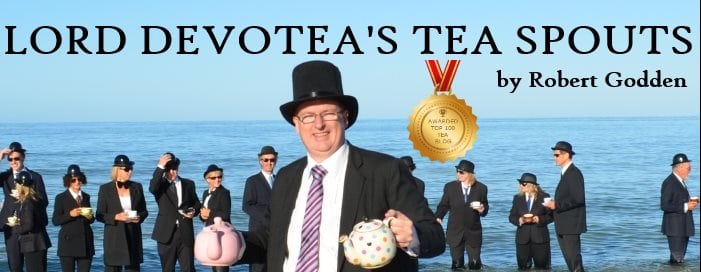Those of you who pay attention and follow my every word – that’s all of you, right? – will know that I have had an uneasy relationship with coffee. I outed myself as bi-beverage when I wrote Swinging Both Ways. I mentioned that it was acceptable, in some circumstances to order coffee, not tea, after a meal in No Shame, But Plenty of Blame. And then finally, I had a messy divorce from coffee and outlined it in It’s Not You, It’s Me.
In several of those, there is a mention that when we do a Pop Up Tea Shop, we blend our own coffee.
Well, soon we’ll need to blend some coffee for a project, so what I thought I’d do here is compare blending tea and blending coffee, as I see it. For your amusement and edumacation.
Bear in mind I’m not a fan of blending for consistency, I like seasonal and annual variation. So this is not about that.
To me, here’s what is the same, and here is what is different:
THE SAME
Blending for taste: it needs to achieve an excellent taste that is in your head, OR answer a question (What if I mixed 30% of A and 20% of B with 50% of C) in an unambiguously brilliant fashion.
Offering a significant variation: There’s no point having a stack of very similar tastes. This is an easy trap to fall into and we are not immune: we are in the process of culling some black tea blends because we have 8 out of our stable of 23 teas.
Blending for customer preference: “Very strong”, “lower caffeine”, “not bitter”, you need to understand what customers will ask for and provide an answer.
Consistency of supply: There’s no point making a super blend if 15% of it requires raw material from a Tibetan monk who brings his product to market only on leap years. Or a raw product that varies wildly and predictably.
DIFFERENT
With tea, it is far easier to blend for forgiveness. Using core teas that produce a good brew across a wide range of steep times and temperatures and methods makes it a little “idiot-proof” . With coffee-making being a more mechanical process, if someone can stuff up a cappuccino with one blend, they can stuff them all up equally. And some machines are not as effective as others.
With tea, one can blend for (leaf) smell, whereas coffee is not normally smelt by a customer as a raw product in isolation.
With tea, one can blend for raw tea texture to add interest. Coffee, well – it’s beans, and not many people know a Nicaraguan Maragogype from an Ethiopian Limu by sight.
With tea, one should not blend in such a way that all the heavier ingredients end up in the bottom of the pack. Not an issue with coffee.
So, with all that in mind, it’s time to blend.

Let’s blend (but only tea for me).
You gave me some food for thoughts.